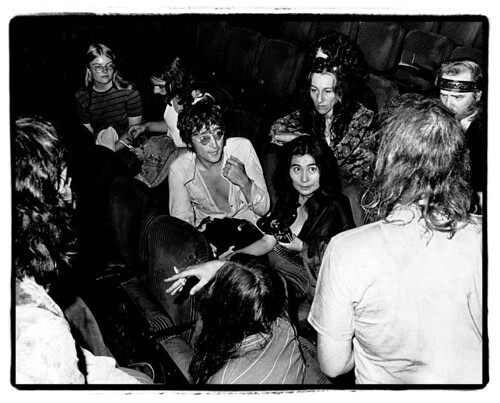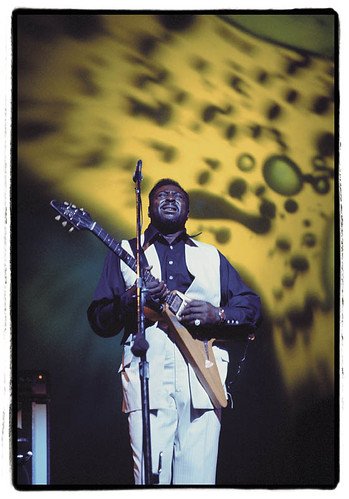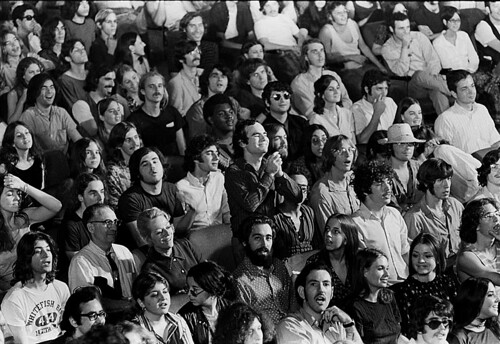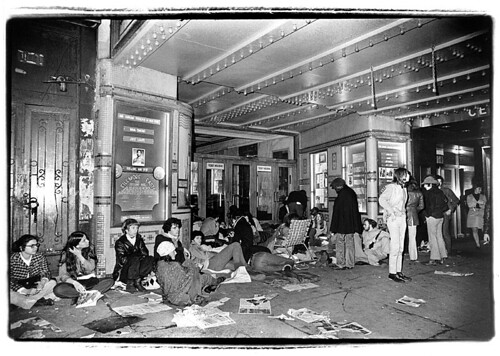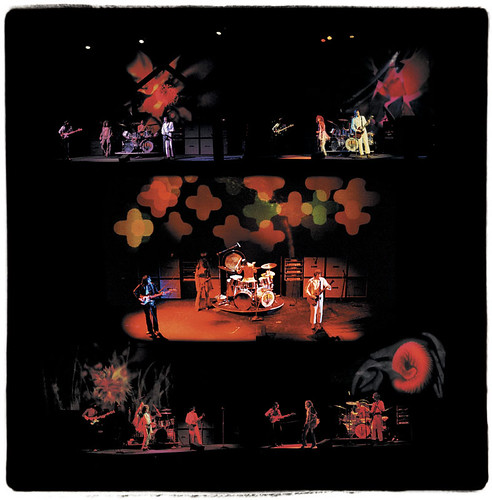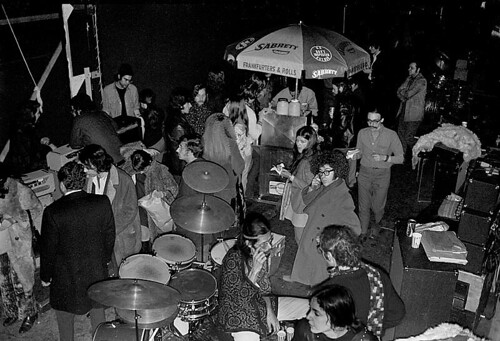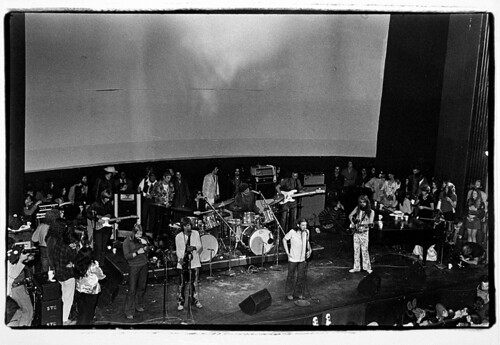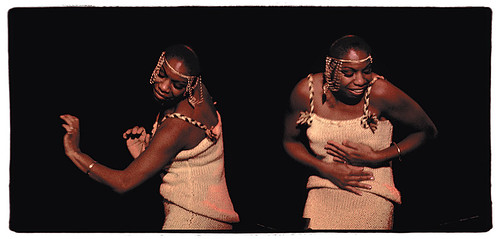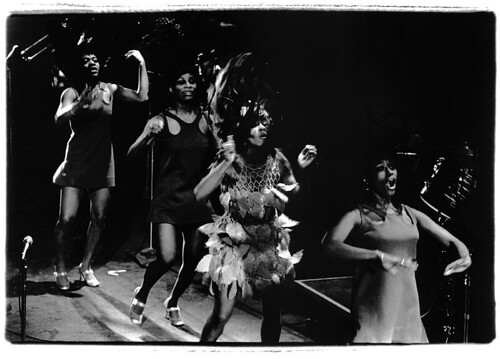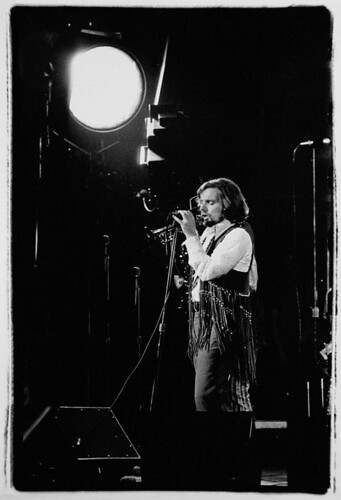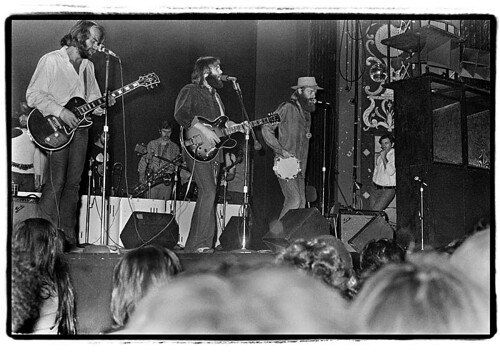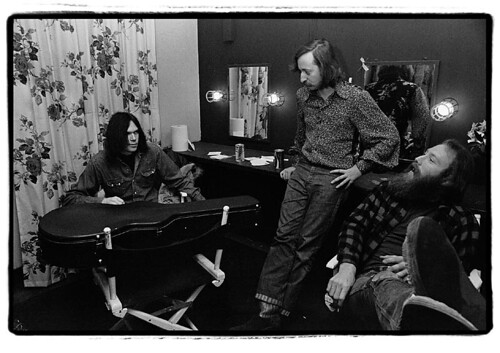Earlier today, we wrote about the Fillmore East, one of the more remarkable properties within the confines of a proposed landmark district. The unofficial house photographer of the Fillmore East, Amalie R. Rothschild, shared her photos and memories from the theater’s brief yet influential existence from 1968 to 1971. — Stephen Rex Brown
Albert King, June 27, 1971
“What was coming out in the 1960’s — the new rock ‘n’ roll — I wasn’t familiar with. My first concerts at the Fillmore were Janis Joplin and Albert King. Of course, I fell in love.”
The audience, Sept. 23, 1970
“The very first seats to sell out for any show were the last three rows in the balcony. That’s where the kids were left alone to smoke dope. You could get stoned out of your mind there and the ushers wouldn’t hassle you. The older couple in this picture is the parents of the lead singer of Sha Na Na.”
The Grateful Dead, Jan. 2, 1970
“Drugs weren’t everywhere you looked, it was discreet, They were there for people who wanted them. Now, when the Dead came around, that was another story. You had to be careful: you never drank out of an open cup, and you even had to wipe away the sweat on your soda can to avoid inadvertently getting dosed. One time the Dead’s soundman and acid chemist, Owsley Stanley, managed to get LSD in the staff coffee urn.”
Dead Heads, May 1970
“That was the very first time kids showed up with sleeping bags the night before a show to get tickets for the Grateful Dead. In a sense, this was the very beginning of the Dead Head phenomenon. It was around 11 p.m. and they had showed up at around or 8 or 9 p.m. I was leaving the Fillmore, talked to a few people and realized this was something I should take pictures of.”
The Who, October 1969
“Bill Graham was genuinely concerned about giving the public a terrific show. The best example of this was the production of The Who’s rock opera, ‘Tommy.’ I suggested that the Joshua Light Show (the in-house visual effects crew) put together a show of its own, with special visual material that had to do with the opera since we had a libretto to work with. We came up with a plan, working with the tech staff, that included a new light show screen, flying mats, upgraded projection equipment, new light show software, additional follow spots and new sound gear. Bill Graham forked over $5,000 — and the shows were already sold out, he didn’t have to put up one cent. But he recognized the opportunity and trusted his staff.”
Chuck Berry, Oct. 3, 1969
“Chuck Berry was a raunchy guy. I didn’t have any personal connection with him, other than just adoring his performances. But there were stories about what the crew had to deal with backstage when he played.”
Backstage party, March 6, 1970
“Bill Graham was a real host. He had worked as a waiter in the Catskills and he was big on hospitality. He often threw parties between shows with plenty of food for the staff, crew and musicians that were there. On a number of occasions he would pay for a Sabrett hot dog cart backstage.”
Joe Cocker with the Mad Dogs and Englishmen, March 28, 1970
“This concert was being filmed as part of the ‘Mad Dogs and Englishmen’ movie that came out in 1971. This was the first time there were that many people in the band’s entourage allowed onstage. You can tell who the musicians are, everyone else was just grooving. See those shoes with the stars on them that are propped against the stage in front of Joe Cocker? He took off the shoes and gave them to a guy in the audience.”
Jimi Hendrix, Dec. 31, 1969
“Of the few musicians I got a chance to meet and talk to, the ones who treated me with respect were guys like Taj Mahal, Ray Charles, and Jimi Hendrix. Jimi let me shoot him backstage. He struck me as a very shy man who transformed onstage.”
Frank Zappa, May 8, 1970
“I was kind of intimidated by Frank Zappa. He was already this well-known avant garde rock musician. The staff and crew always had a good time when Zappa and the Mothers played. If I had known he was from Baltimore — my hometown — I might have found a way to talk to him.”
John Lennon and Yoko Ono, June 5, 1971
“John Lennon and Yoko Ono showed up as guests of Zappa and the Mothers of Invention on June 5, 1971. At around 2 a.m. we were given word that they were going to play an encore. Once it was over John and Yoko were kept in the theater, waiting for the crowd outside to disperse. The picture is of them waiting and talking with the staff, crew and other insiders. Nobody knew that they were going to play, that it was going to happen, it was a surprise. This was one of those happenings — if you were there, you were there.”
Nina Simone, May 30, 1970
“I think Nina Simone is such an underrated performer. I loved her voice, her music. At those concerts at the Fillmore East she was in marvelous form. Richie Havens was there, too. He came onstage at one point and they danced together.”
Breakfast at Ratner’s
“Ratner’s was a Jewish dairy restaurant next door — it’s now a supermarket — that was open 24 hours a day. They had these very old Jewish waiters who were put-off by the hippie crowd. They did not like us and were surly and difficult. But Ratner’s was open at 4 a.m. and they had a great menu. I loved the borscht, and the excellent rice pudding. They had a wonderful fake chopped liver, too.”
Tina Turner and the Ikettes, Jan. 10, 1970
“The Fillmore East was an unusual venue for Ike and Tina Turner. They gave a terrific show. The Ikettes were great, and I loved Tina Turner’s costumes. As far as the tensions between them, I knew nothing about it. As far as I know he never was nasty in public, maybe in front of his crew and band in a dressing room or something, but it never happened openly in the theater in my experience.”
Van Morrison, Sept. 23, 1970
“Van Morrison performed as part of the first rock concert broadcast on American television. It was recorded on Sept. 23, 1970 for National Educational Television, before the days of PBS. The Allman Brothers, Van Morrison, the Byrds, Sha Na Na, Albert King, Elvin Bishop and the Flock all performed. It was fantastic, the lighting was great and the performances were good. But all those groups only played about four songs each. They were out of there around 11 p.m. It wasn’t a whole concert, as it were.”
The marquee, June 27, 1971
“The very last show was invitation only. There were loads of industry people and friends there. It was huge, and broadcast live on WNEW FM. The concert went until 6 a.m. Nobody wanted it to end.”
The Beach Boys, June 27, 1971
“The Beach Boys weren’t initially announced as part of the performers for the final show on June 27, 1971. In fact, I don’t think we knew until the last minute that they were going to play. You can see how scruffy they were by then. The bands that performed on the last night were the Allman Brothers, the J. Geils Band, the Beach Boys, Country Joe, Mountain, and Edgar Winter.”
Neil Young, March 6, 1970
“When you’re living through history, for the most part you don’t have the advantage of hindsight or context to understand that what’s going on around you is important. Something moved me to document it all. I had no idea it would end up being as significant as it was.”
Amalie R. Rothschild is a filmmaker and photographer. Her work can be viewed here.



